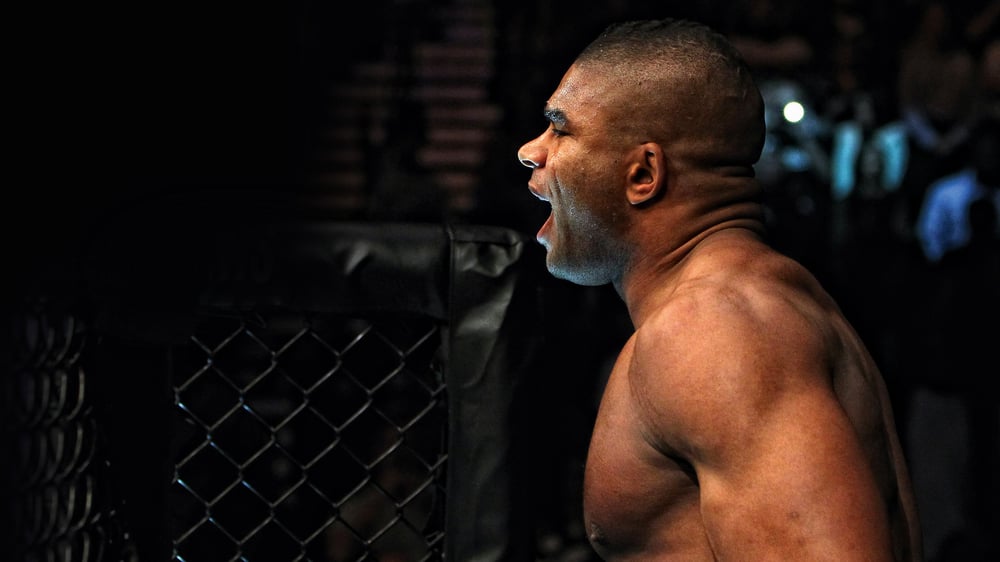
Issue 088
May 2012
Being able to turn your rage on and off like a switch is an art every fighter has to master
Killer instinct is defined as an aggressive and ruthless determination to win or attain a goal. We see it in all competitive sports: the tennis player closing the match with a rocket serve or the defensive end taking out the quarterback in football. In sports psychology we call this channeled aggression, which is the ability to switch justifiable physical aggression on and off while maintaining a controlled temperament.
Mixed martial arts, on the other hand, takes channeled aggression into much deeper waters. Every fight fan knows the vital characteristic in a fighter’s armor is killer instinct: the willingness to pull trigger without hesitation and finish the fight when the opportunity presents itself.
However, in the heat of battle as a defense mechanism, the level of intensity in which fighters unleash their channeled aggression often mutates into hostile aggression. This is where a fighter momentarily regresses to a heightened primal state that is hell-bent on physically punishing, even maiming, their adversary for fear of retaliation.
You’re either born with it with it or not, some will contend, but I disagree. By nature we are predators and the ingredients that make up killer instinct are ever-present in all of us. Therefore, in the right environment and with hard work it can be honed. The hardest task a fighter faces is to master the hostile aggression that comes with killer instinct, not be a slave to it.
The ‘berserker rage’ was questionably effective in the early days of MMA, but the sport has adapted and progressed and today devors most that ‘lose it.’ Remember, all champions in respective promotions share a common trait that keeps them at the top of the food chain: they all have highly focused aggression (i.e. staying in control).

AGGRESSION SHIFTING
Aggression shifting is one method I use with my fighters for awareness management and staying in control. For the purpose of the Octagon it is used as a performance-oriented technique for re-directing hostile aggression towards focused aggression. Once mastered, this process can be executed at will. But it’s no easy task and it’s a minefield that requires cautious navigation.
It starts with a process of generating high levels of hostile aggression by stimulating identical stressors you’ll experience in a fight – the closer the training resembles the real thing, the greater the performance carryover will be. Fully protected, spar at about 80% with a fresh partner as often as every minute, with them driving the pace, over three to five rounds.
The idea is that exhaustion and varying fighting styles will likely cause frustration and this baits your hostile aggression. When you feel it kick in, bring yourself back to calm and then reengage. Do this as often as you can throughout. By adapting to this type of training, you can create a sort of ‘rage immune system,’ which desensitizes, allowing you greater control when the beast wants to take hold.
3 Laws of Killer Instinct
KO Compassion
Only show compassion after your victory. Concern for your opponent in a fight is having a lack of concern for yourself. No fighter competes for second place. Yet even in the upper echelons of MMA, some struggle to ignore the basic instinct of compassion and empathy for their opponent. It is a burden all fighters must endure even if they are facing a teammate, training partner, brother or even childhood hero. When Pat Barry dropped his idol Mirko ‘Cro Cop’ in the opening round at UFC 115 he backed off and ultimately paid the price.
Be Merciless
When men lock horns in the arena of combat they’re out to impose their will over one another. An unspoken mutual consenting understanding ‘it’s you or me’ exists and it’s rare mercy is ever shown in the midst of battle. Alistair Overeem derailing Brock Lesnar by targeting his midsection was a classic execution of mercilessness. Targeting Lesnar’s abdomen after recently recovering from two bouts of diverticulitis was ruthlessly efficient.
Remain Patient
Fighters who enter the Octagon like a bull in a china shop are easy pickings for the athletes who compete today. Fighters should try to mimic a wild cat hunting prey – stalk cautiously, look for patterns of weakness and wait for the moment to strike. Always have in mind: haste can result in injury or starvation. Slightly dramatic, but you get the idea. Anderson Silva is the best on the planet at this; Forrest Griffin, Vitor Belfort and Yushin Okami all fell prey to Silva’s methodology.










